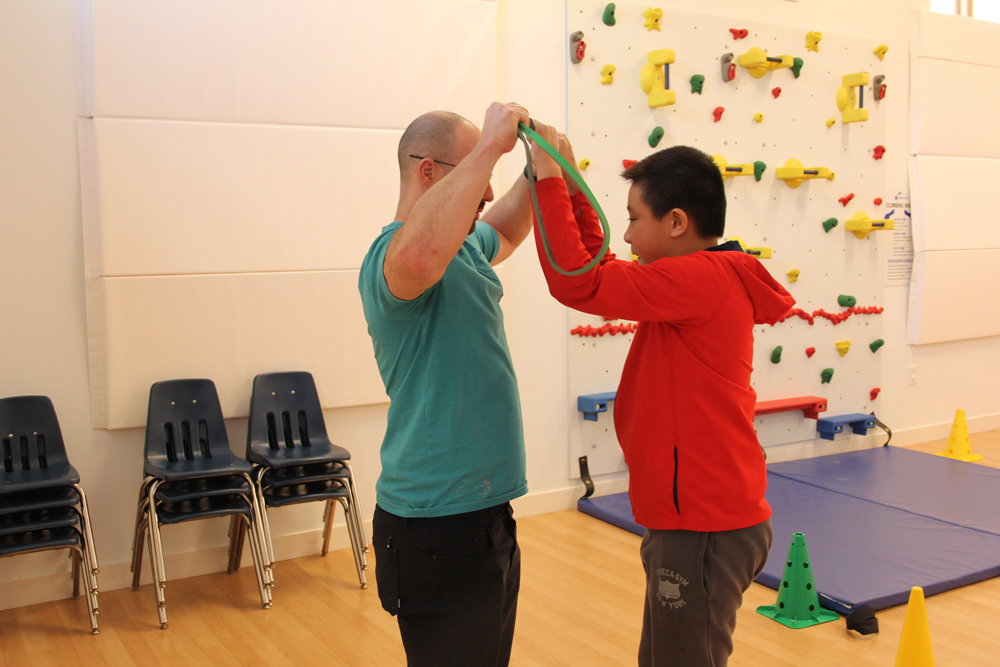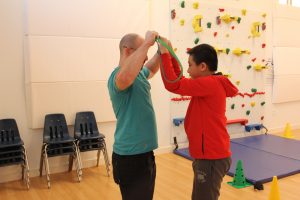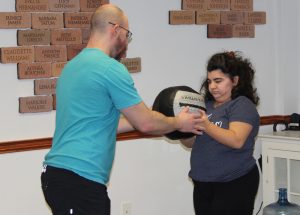The Naturopathic Chef: Apple Pie Monkey Bread
I receive many requests for Monkey Bread by my breakfast lovers but it never had that “wow factor” I look for in a dish. The recipe originated in Hungary and serves as their traditional coffee cake. Dried fruit and nuts are added to the original recipes with the Americanized version tasting more like a Cinnamon roll.
 Here, we capture the first signs of Fall with beautiful Gala and Granny Smith apples. No time to peel and chop apples? My time-saving tip: chunky applesauce!
Here, we capture the first signs of Fall with beautiful Gala and Granny Smith apples. No time to peel and chop apples? My time-saving tip: chunky applesauce!
Ingredients
- 1 tube Flaky Biscuits, I use Immaculate Baking Company
- 1 each Gala Apple, peeled, cored, and diced into small cubes
- 1 Granny Smith Apple, peeled, cored, and diced into small cubes (place apples in Lemon water; White Vinegar works, too)
- ½ stick Butter, unsalted (or Vegan Butter)
- ½ tsp Vanilla
- pinch Salt
- ¼ cup Monk Fruit Sugar
- ¼ cup Organic Brown Sugar
- 1 tsp Cinnamon
Glaze
- ½ cup Organic Powdered Sugar
- 2 tsps Milk of your choice
- ½ tsp vanilla
- ½ tsp Lemon juice
- Whisk until smooth, set aside
Preheat oven to 350 degrees
*Butter an 8×8 glass baking dish.
*Do not use a dark baking pan as the sugar will burn.
Make your assembly line
Cut each biscuit into 4 pieces; pile on a plate. Melt butter in a small bowl and stir in vanilla and salt. Stir sugars and cinnamon together in a separate bowl. Drain apples.
Ready to assemble
Spread half of prepared apples on the bottom of baking dish. Dip a few pieces into the butter and then into the sugar/cinnamon. Place in baking dish at different angles and gently press together and down. Continue layering process until your biscuit puzzle is complete. Top with remaining apples, and a light dusting of the sugar/cinnamon mix.
Bake 22 minutes or until peaks start to get dark. Allow to cool 10 minutes and invert on serving plate. Cool another 5 minutes and pour glaze over top. Garnish with toasted or candied nuts.
Handy Hints – Need this now?
- Butter a loaf pan. Leave biscuits whole, dip in butter mixture then sugar/cinnamon and stand biscuit on its side alternating with unpeeled apple slices. This makes a pull-apart loaf.
- Instead of prepping apples; stir chunky applesauce into butter. Coat biscuit pieces as usual. Pumpkin puree is also a great choice, here. Use Pumpkin Pie Spice instead of Cinnamon. Voila! A Pumpkin Pie Monkey Bread, perfect for your holidays.
Phyto Facts
Conventional refrigerator biscuit dough contains hydrogenated oils that confuse hormone receptors, clog the vascular system and have been shown to cause Gallbladder and Liver challenges. Some commercial dough softeners have been shown to cause both Kidney and Liver cancers.
Immaculate Baking Company doesn’t use these chemicals in any of their products.
Get more great recipes from Tina Martini — her book, Delicious Medicine: The Healing Power of Food is available to purchase on Amazon. More than a cookbook, combining 20+ years of experience, along with her love of coaching, cooking and teaching, Tina offers unexpected insights into the history and healing power of clean eating, along with recipes to help reduce your risk of disease and improve overall wellness so you can enjoy life!
Affectionately referred to as The Walking Encyclopedia of Human Wellness, Fitness Coach, Strength Competitor and Powerlifting pioneer, Tina “The Medicine Chef” Martini is an internationally recognized Naturopathic Chef and star of the cooking show, Tina’s Ageless Kitchen. Tina’s cooking and lifestyle show has reached millions of food and fitness lovers all over the globe. Over the last 30 years, Tina has assisted celebrities, gold-medal athletes and over-scheduled executives naturally achieve radiant health using The Pyramid of Power: balancing Healthy Nutrition and the healing power of food, with Active Fitness and Body Alignment techniques. Working with those who have late-stage cancer, advanced diabetes, cardiovascular and other illnesses, Tina’s clients are astounded at the ease and speed with which they are able to restore their radiant health. Tina believes that maintaining balance in our diet, physical activity, and in our work and spiritual life is the key to our good health, happiness and overall well being. Visit her website, themedicinechef.com



 The above is a standard sentence during my
The above is a standard sentence during my  Efficient and effective coaching enables us to determine how best the athlete will learn a particular exercise. While it’s tempting to classify our athletes as “more visual” or “more kinesthetic” learners I’ve found that it is far better to approach this from an exercise-by-exercise basis. Some of my athletes need physical prompting through the end range of an overhead press but can “get” a band row when I demonstrate pulling my arms back while standing parallel to them.
Efficient and effective coaching enables us to determine how best the athlete will learn a particular exercise. While it’s tempting to classify our athletes as “more visual” or “more kinesthetic” learners I’ve found that it is far better to approach this from an exercise-by-exercise basis. Some of my athletes need physical prompting through the end range of an overhead press but can “get” a band row when I demonstrate pulling my arms back while standing parallel to them.